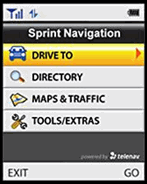Mmetrics have released an interesting little data snack from their smartphone user panels. The chart shows the top “mobile web” destinations in the US versus in the UK.

What’s interesting here is that five of the top ten web sites accessed from mobiles in the UK are carrier/operator sites, while the US list more closely resembles the top www sites list. There are the very consistant top three, Google, Yahoo! and Microsoft (MSN) and only two carrier/operator sites in the US top ten list. I’ve asked this question of a number of people in the mobile applications, infrastructure and operator businesses, “Is the US consumers’ entry to mobile data services impacted by the very high PC peneration rate and previous web experience in the US versus Europe?” The answers have varied and granted one should not draw conclusions from this one data point, but it validates asking the question.
The label “mobile web” creates cognitive dissonance and confusion in the marketplace. Is there a separate web? The real answer should be no, and in fact, as one observes the growth and evolution of mobile data services in the US what strikes the chord of recognition and apparently adoption are those services familiar from our web experience which add a mobile specific UI and uniquely mobile VAS (value added service) to existing behaviors.
For example, Alltel’s award winning Celltop application ties web services into a UI which works on handsets and tiny screens. Note: Celltop awards are both industry and user bestowed.



Weather, news, sports scores, stocks and new ringtones/callback tones are services combined from the web and/or the carrier/operator presented in a handset specific UI. Alltel are also running polls to ask their users which web service they’d like to see offered next through Celltop. The options include a digg feed, Gmail, NASCAR updates or horoscopes. Sounds webilicious, no?
Another example is a personal favorite, Sprint Navigation by Telenav. I love this application.



Most of you have used Mapquest, Yahoo! Maps, Google Maps or some combination of web based mapping and navigation applications. Telenav brings web services behind maps and navigation along traffic information together with GPS and voice capabilities from the handset and mobile network. The result is a powerful personal navigation solution.
First, your actual location is determined via GPS, then you have the option to type or speak the address of your destination. This is where Telenav have done a superior job of integrating with native handset strength in functionality. Screen viewing to observe navigation instructions is supremely difficult at 80 mph on a California freeway. (This is an illustration not an admission of guilt in case the CHPS are listening.) So, Sprint Navigation allows placing a call from inside the application to an automated voice search facility which locates and confirms your destination address, then returns the handset to application state on completion of the call. Your route is calculated and finally the application checks a web traffic conditions service and either reports traffic is good or reroutes to your destination, if possible.
So great! You’ve got a route, traffic considered, and now to get there you need to view the directions. Well, not nessarily. The application repeats turn-by-turn instructions periodically via voice. Using your headset or speakerphone (safety first people) you will hear updated instructions until the turn is reached or you bypass it. If a turn is missed, the application automatically informs you and recalculates the directions. That’s user fault tolerant which I often need give I suffer BADD (blogger attention deficit disorder) which is far shorter and more easily distracted than ADD or ADHD.
Here are two excellent and well adopted applications which do all the things that we’ve been told at countless events and conferences are essential to a successful application, and more importantly, they are implemented extremely well.
- web functionality
- augment with handset mobile network strengths
- mobile specific UI – this might require multiple modalities (don’t ignore voice)
- user centric design and fault tolerant
Okay, maybe the list wasn’t presented exactly this way, but it should’ve been. To all those evangelizing “the mobile web,” please stop. And reset to evangelize web services on mobile devices.
I’ll continue to try and persuade you on this logic. Stayed tuned for the next article of the series: .mobi winners and losers.
Back to the Mmetrics findings. Well over half of the web browsing activity by smartphone users in the UK occurs on operator portals. Well over half of the web surfing activity by smartphone users in the US is through Google. It would be helpful to have a breakdown of the Google activity. Is that all search? How much is attributable to Gmail access? Data always raises more questions.
These findings also highlight another consideration when combined with the illustrations of web services in this article. What does it now mean to access the web from a mobile device? Are web services through thick clients merely a interim step on the path to fully functioning web browsers on mobile devices? I think not. Again, with the example of Sprint Navigation, it takes a handset application to weave handset functionality into a complete solution.
And finally what does it mean that smartphoners in the UK rely upon their operator portals for web browsing? Are the services offered by operators superior to those on the web? Is it habit? Or perhaps, the walled garden is simply more persistent in the UK than it is in the US.






